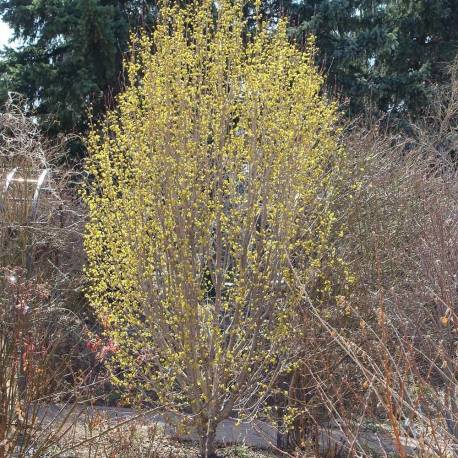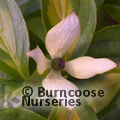
"The Macedonian Sarrissa, Spear and Related Armor".

Gerard said it was to be found in the gardens "of such as love rare and dainty plants". William Turner had only heard of the plant in 1548, but by 1551 he had heard of one at Hampton Court Palace. The shrub was not native to the British Isles. This is Cornus mas Theophrasti, or Theophrastus his male Cornell tree for he ſetteth downe two ſortes of Cornell trees, the male and the female: he maketh the wood of the male to bee ſound as in this Cornell tree which we both for this cauſe and for others alſo, haue made to be the male the female is that which is commonly called Virga ſanguinea, or Dogs berrie tree, and Cornus ſylveſtris, or the wild Cornell tree, of which alſo we will intreate of in the next chap. Name Ĭornus mas, "male" cornel, was named so to distinguish it from the true dogberry, the "female" cornel, Cornus sanguinea, and so it appears in John Gerard's Herbal: The leaves (and fruit) are used in traditional medicine in Central and Southwest Asia. In Italy, the mazzarella, uncino or bastone, the stick carried by the butteri or mounted herdsmen of the Maremma region, is traditionally made of cornel-wood, there called crognolo or grugnale, dialect forms of Italian: corniolo. The wood's association with weaponry was so well known that the Greek name for it was used as a synonym for "spear" in poetry during the fourth and third centuries BCE. Ĭornus mas was used from the seventh century BCE onward by Greek craftsmen to construct spears, javelins and bows, the craftsmen considering it far superior to any other wood. This density makes it valuable for crafting into tool handles, parts for machines, etc. mas is extremely dense and, unlike the wood of most other woody plant species, sinks in water. While Cornus mas flowers are not as large and vibrant as those of the Forsythia, the entire plant can be used for a similar effect in the landscape. The species is also grown as an ornamental plant for its late winter yellow flowers, which open earlier than those of Forsythia.

The fruit is an oblong red drupe 2 cm long and 1.5 cm in diameter, containing a single seed. The flowers are small (5–10 mm in diameter), with four yellow petals, produced in clusters of 10–25 together in the late winter (between February and March in the UK), well before the leaves appear.

The leaves are opposite, 4–10 cm long and 2–4 cm broad, with an ovate to oblong shape and an entire margin.

It is a medium to large deciduous shrub or small tree growing to 5–12 m tall, with dark brown branches and greenish twigs. Cornus mas, commonly known as cornel (also the Cornelian cherry, European cornel or Cornelian cherry dogwood), is a species of shrub or small tree in the dogwood family Cornaceae native to Western Europe, Southern Europe, and Southwestern Asia.


 0 kommentar(er)
0 kommentar(er)
